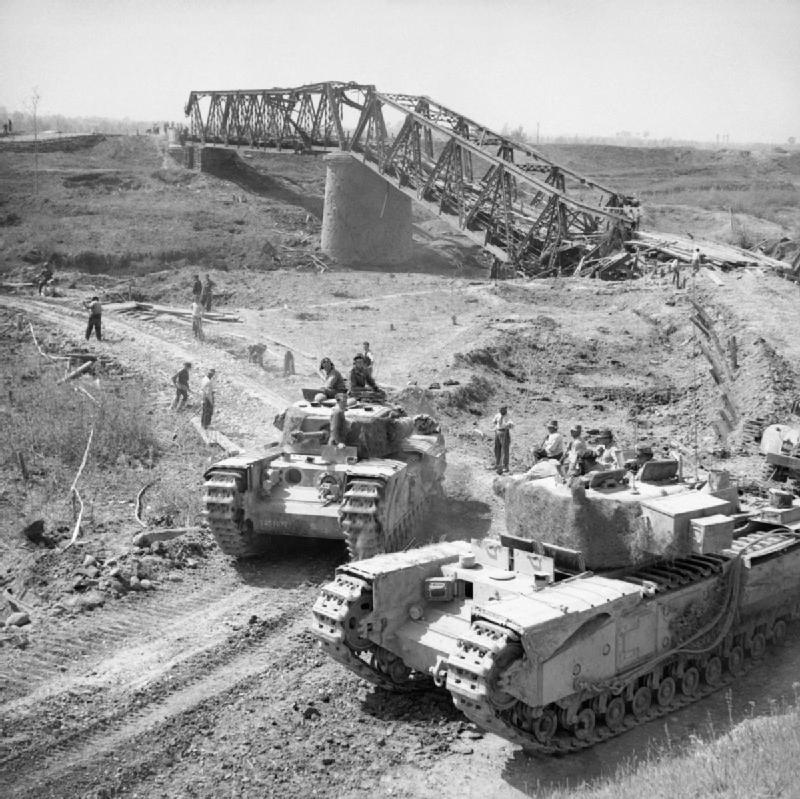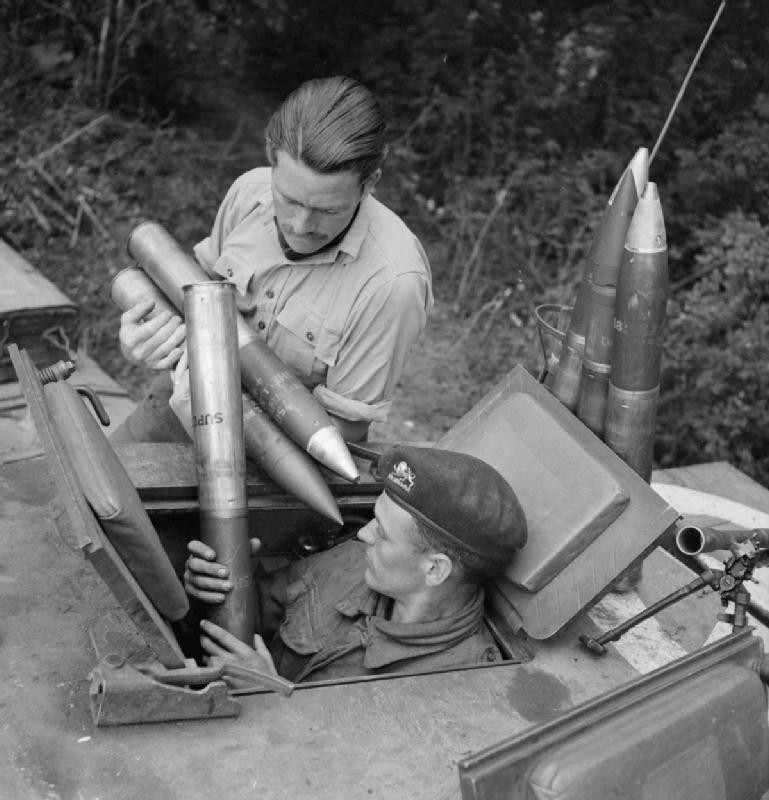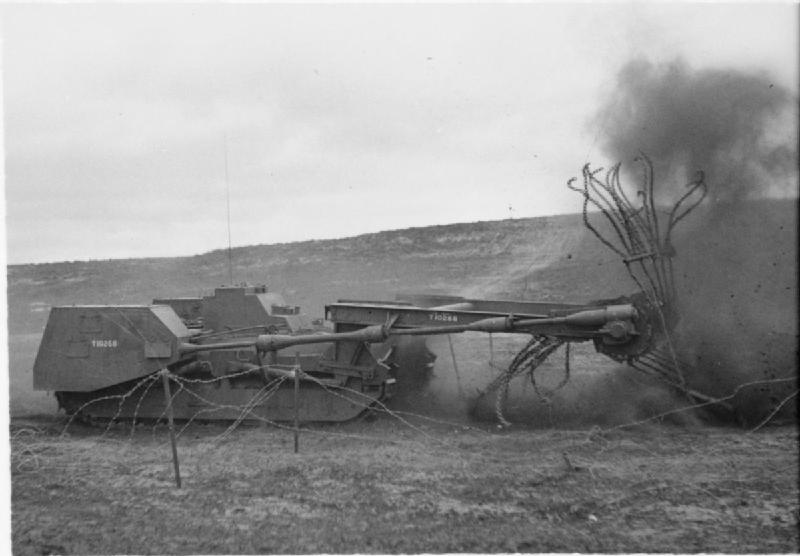|
21st Army Tank Brigade
The 21st Army Tank Brigade was an Armoured warfare, armoured brigade formation of the British Army active during the World War II, Second World War. The brigade served with the First Army (United Kingdom), British First Army and the Eighth Army (United Kingdom), British Eighth Army during the Tunisia Campaign, fighting in Tunisia and Italian campaign (World War II), Italy. History In 1939, the brigade was a 1st Line Army Reserve (United Kingdom), Territorial Army Brigade stationed in the United Kingdom. It was assigned to Eastern Command (United Kingdom), Eastern Command defending the south-eastern portion of the country. Equipment shortages prevented it from receiving any significant numbers of modern tanks; obsolete Vickers Medium Mark II and Light tanks of the United Kingdom, Mk II Light Tanks comprising most of the armour on hand until after the Battle of Dunkirk. Shortly after that battle, the brigade HQ was pulled back to Salisbury Plain, although each tank battalion was d ... [...More Info...] [...Related Items...] OR: [Wikipedia] [Google] [Baidu] |
Armoured Warfare
Armoured warfare or armored warfare (mechanized forces, armoured forces or armored forces) (American English; American and British English spelling differences#-our, -or, see spelling differences), is the use of armoured fighting vehicle, armored fighting vehicles in modern warfare. It is a major component of modern Military science, methods of war. The premise of armoured warfare rests on the ability of troops to penetrate conventional Defense (military), defensive lines through use of Maneuver warfare, manoeuvre by armoured units. Much of the application of armoured warfare depends on the use of tanks and related vehicles used by other supporting arms such as infantry fighting vehicles, self-propelled artillery, and other combat vehicles, as well as mounted combat engineers and other support units. The doctrine of armoured warfare was developed to break the static nature of World War I trench warfare on the Western Front (World War I), Western Front, and return to the 19th ce ... [...More Info...] [...Related Items...] OR: [Wikipedia] [Google] [Baidu] |
Battle Of Dunkirk
The Battle of Dunkirk (french: Bataille de Dunkerque, link=no) was fought around the French port of Dunkirk (Dunkerque) during the Second World War, between the Allies and Nazi Germany. As the Allies were losing the Battle of France on the Western Front, the Battle of Dunkirk was the defence and evacuation of British and other Allied forces to Britain from 26 May to 4 June 1940. After the Phoney War, the Battle of France began in earnest on 10 May 1940. To the east, the German Army Group B invaded the Netherlands and advanced westward. In response, the Supreme Allied Commander, French General Maurice Gamelin, initiated "Plan D" and British and French troops entered Belgium to engage the Germans in the Netherlands. French planning for war relied on the Maginot Line fortifications along the German–French border protecting the region of Lorraine but the line did not cover the Belgian border. German forces had already crossed most of the Netherlands before the French f ... [...More Info...] [...Related Items...] OR: [Wikipedia] [Google] [Baidu] |
M4 Sherman
} The M4 Sherman, officially Medium Tank, M4, was the most widely used medium tank by the Military history of the United States during World War II, United States and Allies of World War II, Western Allies in World War II. The M4 Sherman proved to be reliable, relatively cheap to produce, and available in great numbers. It was also the basis of several other Armoured_fighting_vehicle, armored fighting vehicles including self-propelled artillery, Tank_destroyer, tank destroyers, and Armoured_recovery_vehicle, armored recovery vehicles. Tens of thousands were distributed through the Lend-Lease program to the British Empire#Second World War, British Commonwealth and Soviet Union. The tank was named by the British after the American Civil War General William Tecumseh Sherman. The M4 Sherman evolved from the M3 Lee, M3 Medium Tank, which for speed of development had its main armament in a side sponson mount. The M4 retained much of the previous mechanical design, but moved the 75_mm ... [...More Info...] [...Related Items...] OR: [Wikipedia] [Google] [Baidu] |
Ordnance QF 75 Mm
The Ordnance QF 75 mm, abbreviated to OQF 75 mm, was a British tank gun of the Second World War. It was obtained by boring out the Ordnance QF 6-pounder ("6 pdr") 57 mm anti-tank gun to 75 mm, to give better performance against infantry targets in a similar fashion to the 75 mm M3 gun fitted to the American Sherman tank. The QF came from "quick-firing", referring to the use of ammunition where the shell has a fixed cartridge. The gun was also sometimes known as ROQF from Royal Ordnance (the manufacturer) Quick-Firing. Development Prior to the introduction of the ROQF 75 mm, British tanks had been equipped with first the QF 2-pounder (40 mm) and then the larger 6-pounder (57 mm). These guns were designed to fire armour-piercing shot, small high-velocity solid rounds that were effective against tanks but did little damage to groups of infantry or soft targets like trucks. Some tanks operating as infantry support were given howitzers firing HE shells, such as earl ... [...More Info...] [...Related Items...] OR: [Wikipedia] [Google] [Baidu] |
Bren Carrier
The Bren gun was a series of light machine guns (LMG) made by Britain in the 1930s and used in various roles until 1992. While best known for its role as the British and British Empire, Commonwealth forces' primary infantry LMG in World War II, it was also used in the Korean War and saw service throughout the latter half of the 20th century, including the 1982 Falklands War. Although fitted with a bipod, it could also be mounted on a tripod or be vehicle-mounted. The Bren gun was a licensed version of the Czechoslovak ZGB 33 light machine gun which, in turn, was a modified version of the ZB vz. 26, which British Army officials had tested during a firearms service competition in the 1930s. The later Bren gun featured a distinctive top-mounted curved box magazine, conical flash hider, and quick change barrel. The name ''Bren'' was derived from Brno, the Czechoslovak city in Moravia, where the Zb vz. 26 was designed (in the Zbrojovka Brno, Zbrojovka Brno Factory) and London Boroug ... [...More Info...] [...Related Items...] OR: [Wikipedia] [Google] [Baidu] |
M3 Stuart
The M3 Stuart/Light Tank M3, was an American light tank of World War II. An improved version of the tank entered service as the M5 in 1942 to be supplied to British and other Commonwealth forces under lend-lease prior to the entry of the U.S. into the war. Afterwards, it was used by U.S. and Allied forces until the end of the war. The British service name "Stuart" came from the American Civil War Confederate general J. E. B. Stuart and was used for both the M3 and the derivative M5 Light Tank. Unofficially, were also often called "Honeys" by the British, because of their smooth ride. In U.S. use, the tanks were officially known as "Light Tank M3" and "Light Tank M5". Stuarts were first used in combat in the North African campaign; about 170 were used by the British forces in Operation Crusader (18 November – 30 December 1941). Stuarts were the first American-crewed tanks in World War II to engage the enemy in tank versus tank combat when used in the Philippines in Decemb ... [...More Info...] [...Related Items...] OR: [Wikipedia] [Google] [Baidu] |
Tunis
''Tounsi'' french: Tunisois , population_note = , population_urban = , population_metro = 2658816 , population_density_km2 = , timezone1 = CET , utc_offset1 = +01:00 , timezone1_DST = , utc_offset1_DST = , postal_code_type = Postal code , postal_code = 1xxx, 2xxx , area_code_type = Calling code , area_code = 71 , iso_code = TN-11, TN-12, TN-13 and TN-14 , blank_name_sec2 = geoTLD , blank_info_sec2 = .tn , website = , footnotes = Tunis ( ar, تونس ') is the capital and largest city of Tunisia. The greater metropolitan area of Tunis, often referred to as " Grand Tunis", has about 2,700,000 inhabitants. , it is the third-largest city in the Maghreb ... [...More Info...] [...Related Items...] OR: [Wikipedia] [Google] [Baidu] |
4th Infantry Division (United Kingdom)
The 4th Infantry Division was a regular infantry division of the British Army with a very long history, seeing active service in the Peninsular War, the Crimean War, the First World War, and during the Second World War. It was disbanded after the war and reformed in the 1950s as an armoured formation before being disbanded and reformed again and finally disbanded on 1 January 2012. Napoleonic Wars The 4th Division was originally formed in 1809 by Arthur Wellesley, 1st Duke of Wellington, as part of the Anglo-Portuguese Army, for service in the Peninsular War. It fought in the Battles of Talavera, Salamanca, Roncesvalles, Vitoria, the Pyrenees, Orthez, and Toulouse, and the siege of Badajoz. Peninsular War order of battle The order of battle from January 1812 was as follows: Major General Sir Charles Colville (to April 1812) Major General Lowry Cole (from June 1812) * 1st Brigade: Major General James Kemmis ** 3/27th (Inniskilling) Regiment of Foot ** 1/40th (2nd Somersets ... [...More Info...] [...Related Items...] OR: [Wikipedia] [Google] [Baidu] |
145th Regiment Royal Armoured Corps
The 145th Regiment Royal Armoured Corps (8th Duke of Wellington's Regiment) (145 RAC) was an armoured regiment of the British Army's Royal Armoured Corps that served in North Africa, Tunisia and Italy during World War II. The Duke of Wellington's Regiment's two junior battalions, the 8th Battalion (8 DWR) and the 9th Battalion (9 DWR) were both simultaneously converted into armoured regiments, becoming respectively 145 RAC and 146 RAC. Origin 145th Regiment RAC was formed in November 1941 by the conversion to the armoured role of 8th Battalion, Duke of Wellington's Regiment, which had been raised in 1940 and was serving in the 203rd Independent Infantry Brigade (Home), a Home Defence formation serving in South West England. In common with other infantry units transferred to the Royal Armoured Corps, all personnel continued to wear their Duke of Wellington's cap badge on the black beret of the Royal Armoured Corps. Service 145 RAC was assigned to 21st Army Tank Brigade, which s ... [...More Info...] [...Related Items...] OR: [Wikipedia] [Google] [Baidu] |
12th Royal Tank Regiment
1 (one, unit, unity) is a number representing a single or the only entity. 1 is also a numerical digit and represents a single unit of counting or measurement. For example, a line segment of ''unit length'' is a line segment of length 1. In conventions of sign where zero is considered neither positive nor negative, 1 is the first and smallest positive integer. It is also sometimes considered the first of the infinite sequence of natural numbers, followed by 2, although by other definitions 1 is the second natural number, following 0. The fundamental mathematical property of 1 is to be a multiplicative identity, meaning that any number multiplied by 1 equals the same number. Most if not all properties of 1 can be deduced from this. In advanced mathematics, a multiplicative identity is often denoted 1, even if it is not a number. 1 is by convention not considered a prime number; this was not universally accepted until the mid-20th century. Additionally, 1 is ... [...More Info...] [...Related Items...] OR: [Wikipedia] [Google] [Baidu] |
43rd Royal Tank Regiment
The 43rd (6th (City) Battalion, The Royal Northumberland Fusiliers) Royal Tank Regiment (43 RTR) was an armoured regiment of the British Army's Royal Armoured Corps that tested and demonstrated specialised Armoured Fighting Vehicles during World War II. Origin and training As part of the rearmament of the British Army before World War II, the 6th Battalion Royal Northumberland Fusiliers, a Territorial Army infantry battalion, was converted to the armoured role on 1 November 1938, under the designation 43rd (6th City) Battalion, The Royal Northumberland Fusiliers, Royal Tank Regiment, or '43 RTR' for short. During 1939, it also formed 49th Royal Tank Regiment as a duplicate regiment. The regiments shared St George's Drill Hall in Newcastle upon Tyne as their depot. Both regiments were part of 25th Army Tank Brigade. At the end of May 1940, with the British Expeditionary Force being evacuated from Dunkirk and the imminent threat of German invasion of England, 25th Army Tank Brigad ... [...More Info...] [...Related Items...] OR: [Wikipedia] [Google] [Baidu] |
Churchill Tank
The Tank, Infantry, Mk IV (A22) Churchill was a British infantry tank used in the Second World War, best known for its heavy armour, large longitudinal chassis with all-around tracks with multiple bogies, its ability to climb steep slopes, and its use as the basis of many specialist vehicles. It was one of the heaviest Allied tanks of the war. The origins of the Churchill's design lay in the expectation that war in Europe might be fought in conditions similar to those of the First World War, and thus emphasised the ability to cross difficult ground. The Churchill was hurried into production in order to build up British defences against a possible German invasion. The first vehicles had flaws that had to be overcome before the Churchill was accepted for wide use. After several Marks (versions) had been built, a better-armoured specification, the Mark VII, entered service with the British Army. The improved versions performed well in the later stages of the war. The Churchil ... [...More Info...] [...Related Items...] OR: [Wikipedia] [Google] [Baidu] |

.jpg)






